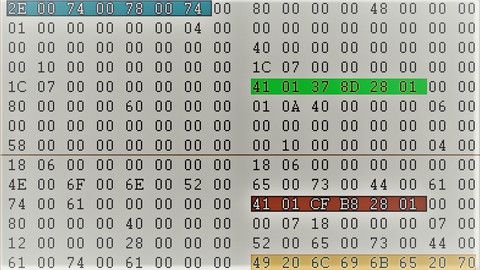
Cyber Forensics: Analyzing Data Streams in NTFS
Cyber Forensics: Analyzing Data Streams in NTFS, available at $49.99, has an average rating of 4.24, with 7 lectures, based on 78 reviews, and has 4952 subscribers.
You will learn about Basic understanding and importance of Data Streams Adding Resident and Non-Resident Data in the Data Streams Analyzing Short and Long Filenames using WinHex Analyzing Resident and Non-Resident Data using WinHex Verifying existence of Non-Resident Data using HxD This course is ideal for individuals who are Cyber Security and forensics related students and professionals It is particularly useful for Cyber Security and forensics related students and professionals.
Enroll now: Cyber Forensics: Analyzing Data Streams in NTFS
Summary
Title: Cyber Forensics: Analyzing Data Streams in NTFS
Price: $49.99
Average Rating: 4.24
Number of Lectures: 7
Number of Published Lectures: 7
Number of Curriculum Items: 8
Number of Published Curriculum Objects: 8
Original Price: $19.99
Quality Status: approved
Status: Live
What You Will Learn
- Basic understanding and importance of Data Streams
- Adding Resident and Non-Resident Data in the Data Streams
- Analyzing Short and Long Filenames using WinHex
- Analyzing Resident and Non-Resident Data using WinHex
- Verifying existence of Non-Resident Data using HxD
Who Should Attend
- Cyber Security and forensics related students and professionals
Target Audiences
- Cyber Security and forensics related students and professionals
The course will help students to learn about the basics of Microsoft Windows File System (NTFS), the Master File Table (MFT) and how data is stored in data streams, both primary and alternate. Students will also get to differentiate between resident and non-resident data and learn how to hide data in the ADS. It would also enable students to analyze the data inside and outside of the MFT and to locate the specific cluster/sector on the hard disk where this data is actually stored. Moreover the students will be able to:
-
Understand the basics of Alternate Data Streams (ADS), their usage and history
-
Adding resident (less than 512 bytes) and non-resident (more than 512 bytes) data in both alternate and primary data streams
-
Analyzing the resident data in any stream by locating it inside the MFT using a common Hex Editor
-
Analyzing the non-resident data in any stream by locating its actual cluster and sector address on the disk
-
Verifying the presence of non-resident data in any data stream with the help of another Hex Editor
-
Practically experiment common Forensics tools and Hex Editors for analyzing data in the MFT and otherwise.
This course will turn out to be very useful for the students who want to understand the basics of computer forensics and file systems as it provides insight to analyzing data stored in the data streams.
Course Curriculum
Chapter 1: Introduction
Lecture 1: Introduction
Chapter 2: Alternate Data Streams (ADS)
Lecture 1: Adding Data to the Alternate Data Streams
Lecture 2: Basics of Alternate Data Streams
Lecture 3: Analyzing Resident and Non-Resident Data in ADS
Lecture 4: Verifying Non-Resident ADS Data using HxD
Chapter 3: Primary Data Streams in NTFS
Lecture 1: Analyzing Non-Resident Data in Primary Data Stream
Lecture 2: Verifying Cluster Information using HxD
Instructors
-
Cyber Imaginations
Cyber Security Expert | Enthusiast | Analyst
Rating Distribution
- 1 stars: 3 votes
- 2 stars: 1 votes
- 3 stars: 7 votes
- 4 stars: 26 votes
- 5 stars: 41 votes
Frequently Asked Questions
How long do I have access to the course materials?
You can view and review the lecture materials indefinitely, like an on-demand channel.
Can I take my courses with me wherever I go?
Definitely! If you have an internet connection, courses on Udemy are available on any device at any time. If you don’t have an internet connection, some instructors also let their students download course lectures. That’s up to the instructor though, so make sure you get on their good side!
You may also like
- Top 10 Language Learning Courses to Learn in November 2024
- Top 10 Video Editing Courses to Learn in November 2024
- Top 10 Music Production Courses to Learn in November 2024
- Top 10 Animation Courses to Learn in November 2024
- Top 10 Digital Illustration Courses to Learn in November 2024
- Top 10 Renewable Energy Courses to Learn in November 2024
- Top 10 Sustainable Living Courses to Learn in November 2024
- Top 10 Ethical AI Courses to Learn in November 2024
- Top 10 Cybersecurity Fundamentals Courses to Learn in November 2024
- Top 10 Smart Home Technology Courses to Learn in November 2024
- Top 10 Holistic Health Courses to Learn in November 2024
- Top 10 Nutrition And Diet Planning Courses to Learn in November 2024
- Top 10 Yoga Instruction Courses to Learn in November 2024
- Top 10 Stress Management Courses to Learn in November 2024
- Top 10 Mindfulness Meditation Courses to Learn in November 2024
- Top 10 Life Coaching Courses to Learn in November 2024
- Top 10 Career Development Courses to Learn in November 2024
- Top 10 Relationship Building Courses to Learn in November 2024
- Top 10 Parenting Skills Courses to Learn in November 2024
- Top 10 Home Improvement Courses to Learn in November 2024






















